Piston Slap: Feelin' Blue, Cobalt?

Sajeev,
I own a 2010 Cobalt SS and I’ve been having random problems with it. I’ve tried checking the forums and I haven’t found any information that matches my car’s problems. It seems like most of the posts on the Cobalt SS forums are by people with modified/tuned cars, and mine is completely stock.
I’ve had a few problems fixed under warranty, but the random problems I’m referring too are ones that apparently haven’t thrown codes. Since the car is still under warranty, I’ve been to 2 dealerships and both dealers claimed they couldn’t replicate the problems. One dealership refused to open the motor up without seeing a code. The other claimed that they took the cylinder head off and checked the intake manifold, but couldn’t find anything. (I don’t trust that they did this)
If you and the B&B have any ideas about what might be causing the problems, I might be able to point a dealer’s mechanics in the right direction and get them to take another look. The next time one of these problems happens, I’m going to bite the bullet and go get an OBD-II scanner to see if I can figure something out. The codes don’t always lead directly to the problems though…
The problems: Sometimes after a rain or letting the car sit for more than a day or so, the idle will be very rough. The revs will jump around and the car will vibrate heavily and rock sideways. This problem clears up after letting the car idle for a minute or so, or after driving it cautiously by using light throttle and keeping the revs below 2500. This problem is bizarre: the car feels like it has a small block with a thumper cam, but the exhaust note is steady, there’s no smoke, etc.
At random intervals, the car will shake badly after I shift into first and get the car moving. The shaking is front to back, not sideways, and it feels like the engine isn’t firing properly and might stall. This shaking occurs at up to 2000 rpm or so. Revving higher than that clears it up. I’ve read that DI motors sometimes experience light throttle/RPM driveability problems, so I’m wondering if that’s what I’m experiencing. This problem also occurs after start up only.
On three occasions, the engine has backfired badly. After each upshift, the exhaust would emit a series of loud pops. There was no smoke from the exhaust and nothing came out of it so far as I can tell. The backfires would stop after shutting the engine off or just driving around normally for a few minutes. This problem is hugely amusing when it happens, but worrisome because it obviously shouldn’t be happening.
For completeness’ sake, the engine problem I did have fixed was a melted emissions line. The line was replaced and heat shielding was added to prevent further occurances. That was 33k miles ago, and the problem has not reoccurred so far as I can tell. Other problems were things like brakes, bad ignition module, etc. that have nothing to do with the engine or transmission.
Finally, the transmission is giving me problems. The transmission will randomly not let me put the car into a gear. As I go to shift, the gearbox will refuse to let me slot the stick into gear. If you’ve ever driven a car with a shift lockout, that’s what it feels like. (The car has no shift lockout though) It happens regularly with first through third, but reverse is really bad. Pushing and releasing the clutch usually cures the problem, but on a few occasions I’ve just turned the car off and walked away because I couldn’t go into reverse. I rarely shift above 3500 rpm, but these days, it feels like I’m forcing the car into gear when I do so. So…master cylinder going bad? Synchros dying?
Frankly, the random problems that are cropping up make the car feel like it will be a huge liability after the warranty expires. If I can’t get this stuff diagnosed and fixed, I may dump it and accept the financial hit. All of the maintenance has been done on or ahead of schedule. To try and prevent carbon buildup on the intake valves or in the turbos, I’ll do full throttle on the highway 2-3x a month and follow that with at least 25 minutes of further highway driving. I also won’t let the car hit boost and then immediately shut it off, also to prevent turbo sludging.
I rolled the dice on GM once before with a Monaro/GTO, and that car was perfect. The Cobalt doesn’t feel like it’s going to go the distance, and that’s a shame because it’s a blast to drive.
Sajeev answers:
I really hope there was a miscommunication between the mechanic, the service advisor and yourself: pulling the head and checking the intake manifold is like a doctor cracking open your skull to get a better look at your deviated septum. It’s fun to be a clueless armchair quarterback!
Now it’s possible the mechanic took the head off to check for coking problems commonplace in direct-injection engines, but I find that hard to believe: a borescope should do the trick for much less labor. Then again, if GM’s warranty is paying for the labor…but that’s not the point. I suspect you need to blow the carbon out of your little DI mill. Run that little thing all the way to redline a few times: it’s the nature of the beast. And it’s been that way since the Mercedes 300SL I drove many moons ago.
The transmission? Perhaps the hydraulic clutch assist is bad in some manner (bad cylinder, a leak, cooked fluid) or perhaps a switch to a different transmission fluid is in order. I’m guessing you need to flush the clutch fluid: if it is even remotely smoky or discolored, flush it out. I suspect that will fix the problem. The heat generated from a turbo mill can easily cook that fluid…it’s entirely possible.
Is this a good reason to dump it when the warranty expires? Provided my repair guesses are correct? Nah, probably not.
Off to you, Best and Brightest.
Send your queries to sajeev@thetruthaboutcars.com. Spare no details and ask for a speedy resolution if you’re in a hurry.

More by Sajeev Mehta
Latest Car Reviews
Read moreLatest Product Reviews
Read moreRecent Comments
- SilverCoupe Tim, you don't always watch F1 as you don't want to lose sleep? But these races are great for putting one to sleep!I kid (sort of). I DVR them, I watch them, I fast forward a lot. It was great to see Lando win one, I've been a fan of McLaren since their heyday in CanAm in the late '60's.
- Cprescott The problem with this fable by the FTC is:(1) shipping of all kinds was hindered at ports because of COVID related issues;(2) The President shafted the Saudis by insulting them with a fist bump that torqued them off to no end;(3) Saudis announced unilateral production cuts repeatedly during this President's tenure even as he begged to get them to produce more;(4) We were told that we had record domestic production so that would have lowered prices due to increased supply(5) The President emptied the strategic petroleum reserve to the lowest point since the 1980's due to number 3 and then sold much of that to China.We have repeatedly been told that documents and emails are Russian disinformation so why now are we to believe this?
- Ollicat Another Biden attempt to say, "Look over there!"
- Kjhkjlhkjhkljh kljhjkhjklhkjh Who cares. Price of gas is not the issue. spending an extra 100$ a month over 4 tanks of gas is not the issue.this a political scam to distract really dumb people from the real issue. if rent and house payments were not up by 50% to as high as 150% higher in a ton of locations, then paying an extra 100$ in gas would be annoying but not really an issue. But the real-estate market with hedge fund investors, power-relator groups bought a ton of houses and flipped them into rentals and jacked up the rates uplifting the costs on everything else. and ironically no-one seems to be in any hurry to build more houses to bring those costs down because supply and demand means keeping less houses available to charge as much as you want. It is also not the issue as a secondary issue is child care costs and medical... again 100$ extra per month in gas is *nothing* compared to 800$ a month in ''child care'' and 300$ per visit to the doctor office, 300$ for a procedure less dentist trip..
- Ajla Is there something proprietary or installed on the moon with these that I'm not aware of?


















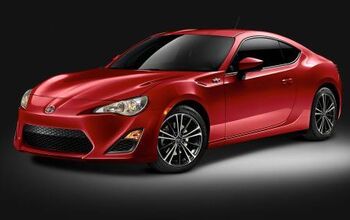
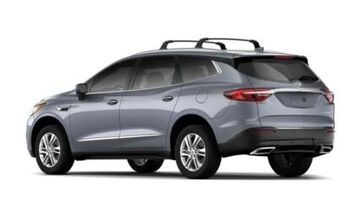
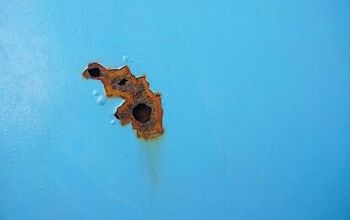
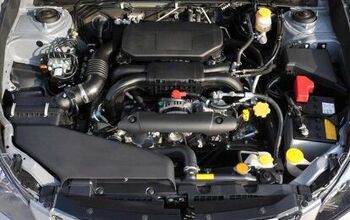
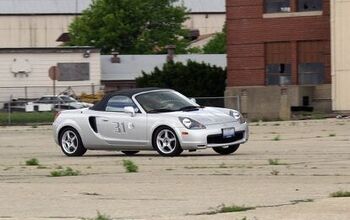










Comments
Join the conversation
Kind of a shot in the dark but, check plugs for gap...have the car outside, preferably COLD. Check compression. Turbo Saabs with similar engines have had intake valves with insufficient heat-treating "chamfering" causing the valve not to seal properly when cold, but the problem seems to go away after warm-up.
OP said: "To try and prevent carbon buildup on the intake valves or in the turbos, I’ll do full throttle on the highway 2-3x a month and follow that with at least 25 minutes of further highway driving." Sajeev said: "I suspect you need to blow the carbon out of your little DI mill. Run that little thing all the way to redline a few times: it’s the nature of the beast." Unless a Cobalt SS has dual port and direct injection, the so-called "Italian tune-up" shouldn't do anything here re: carbon on the intake valves. You need to run Seafoam or something similar in the intake to get rid of the carbon. The Italian tune-up works for port injection when there is fuel washing the intake valves, but AFAIK doesn't work for DI, unless the DI engine has dual injection. The fuel is never washing the intake valves, as it is in port or dual injection. What's happening is that the PCV system is sending gunk to the intake, which deposits as carbon on the intake valves. No amount of extra fuel will get this out because the fuel never hits the intake. The alternative to Seafoaming is to disassemble and physically remove the carbon.